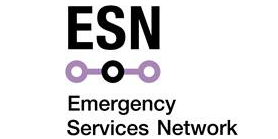
ESN Emergency Services Network
Exhibitor
Information
The Home Office is leading a cross-government programme to deliver the new Emergency Services Network (ESN) critical communications system. This will replace the current Airwave service used by the emergency services in Great Britain (England, Wales and Scotland) and transform how they operate. ESN will enable fast, safe and secure voice, video and data across the 4G network and give first responders immediate access to life-saving data, images and information in live situations and emergencies on the frontline.
Investment in ESN will also mean improvements to 4G network coverage, which will allow 999 calls to be made from any 4G enabled mobile phone in some of the most remote and rural parts of Great Britain where it was not previously possible.
While the technology that supports Airwave is reliable and fit for purpose, its limited capability means it cannot match the opportunities offered by newer critical communications mobile technology.
ESN’s critical mobile technology will mean communication between the emergency services will take priority over other network traffic, even at peak times in busy urban locations. It will mean the emergency services and other first responders can share vital data, information and expertise quickly and securely from the frontline when it is needed most.
It will give the emergency services access to up-to-date products and applications as technology evolves. They will be able to choose what meets their unique operational requirements from the tools and technologies available.
Users for ESN include the police, fire and rescue and ambulance services as well as other users stretching from local authorities and utility services to first responders like inshore rescue. There are more than 300,000 frontline emergency service users who will depend on ESN, using handheld devices or operating equipment in 45,000 vehicles, 66 aircraft and more than 100 control rooms.
ESN will deliver:
secure and resilient mission critical communications the emergency services and other first responder communities can trust to keep them safe
a modern voice and data platform which will enable the emergency services to improve front-line operations
a common platform to enable emergency services to work more closely together for data sharing in emergencies
The network infrastructure is being built by EE, by upgrading its existing network of around 19,000 masts, deploying 700 more 4G masts in rural areas and building new sites.
The Home Office is supplementing this coverage by building 292 masts to give the emergency services coverage in some of the most remote and rural areas of Great Britain. These sites are known as the Extended Area Service (EAS).